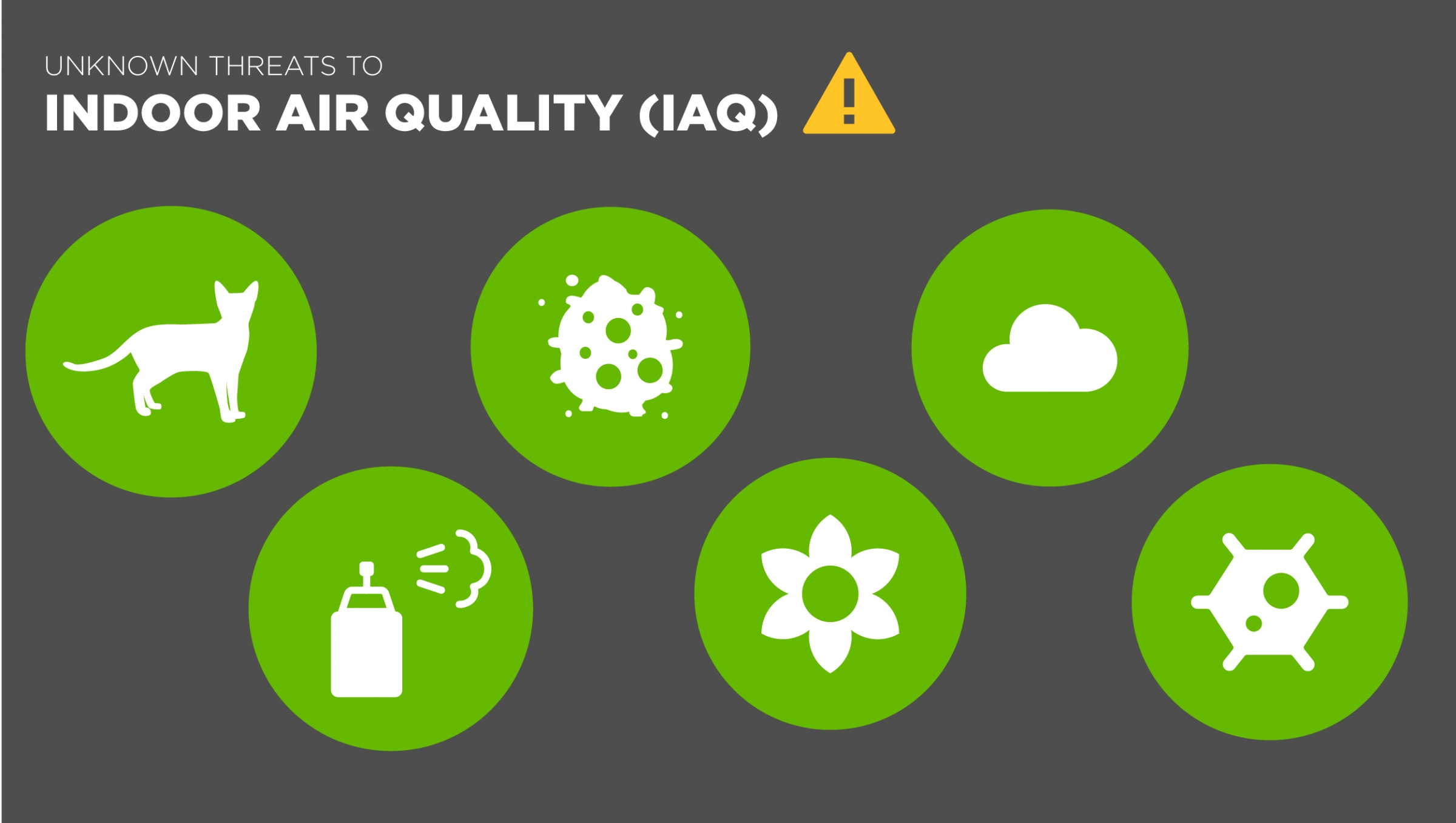
(View as a downloadable PDF version)
Indoor air if often two to five times more contaminated than outdoor air. Does the air you breathe inside your home contain these hidden contaminants?
Dust & Pet Dander
Dust mites and pet dander have a tendency to collect on carpets, furniture, and bedding.
Mold
Mold can quickly develop in areas with humidity levels above 60%, such as the crawl space.
Viruses & Bacteria
Heating and cooling system filters often do not remove germs from your indoor air.
Pollen
Outdoor pollen can seep indoors through air leaks in your home’s exterior.
Volatile Organic Compounds
VOCs can cause eye, nose, and throat irritation and emanate from synthetic fabrics, pressed wood furniture, paints, and more.
Carbon Monoxide
This invisible yet lethal gas can leak from combustion appliances inside your home.
6 Ways to Improve Indoor Air Quality
Clean Often
Vacuum carpets, dust furniture, and wash bedding and furniture covers frequently.
Check Air Filters
Check your HVAC air filters at least once a month and change as soon as dust or dirt begins to accumulate.
Seal Air Leaks
Have a professional air seal the tiny holes in your home’s exterior to help keep pollutants out.
Seal Ductwork
Have a professional seal duct leaks to keep contaminants out of your HVAC system.
Remove Mold
Have a mold remediation specialist inspect your home for musty odors and mold — and remove mold as needed according to the top industry standards.
Encapsulate the Crawl Space
Many IAQ issues stem from an unhealthy crawl space. Encapsulation eliminates crawl space mold and moisture issues through air sealing, installation of a vapor barrier, and dehumidification.
